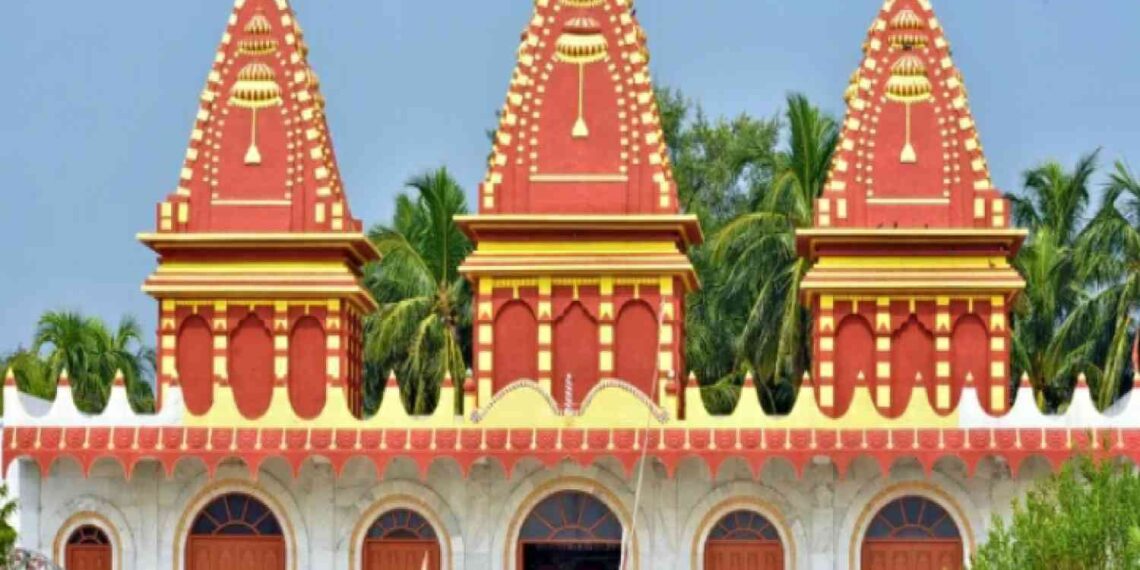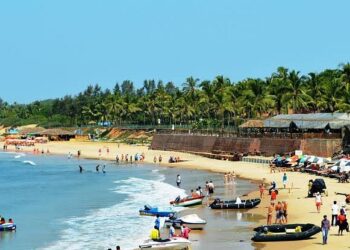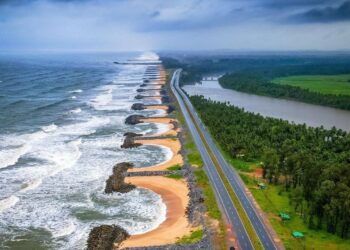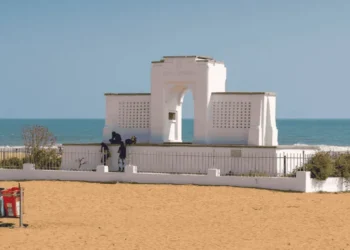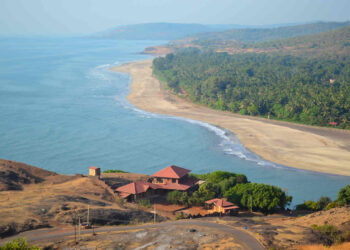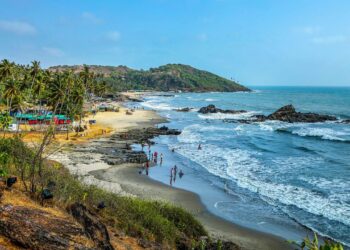The Kapil Muni Temple on Sagar Island, in South 24 Parganas, West Bengal, is a key place for Hindus, dedicated to the great Sage Kapil Muni. Near where the Ganges River meets the Bay of Bengal, about 100 kilometers south of Kolkata, it is famous for the Gangasagar Mela during Makar Sankranti. This blog shares detailed information about the temple’s past, how it is built, why it matters for worship, and how to visit, based on what is known.
History of Kapil Muni Temple
The Kapil Muni Temple has roots in old Hindu stories. A tale says Queen Satyabhama built the first temple in 430 AD, but the sea took it away. In the early 1800s, under British governor Warren Hastings, Ramanandi sadhus from Ayodhya took over the site and made a bamboo temple, which cyclones destroyed in the late 1950s or early 1960s. A brick temple was built in 1961 for Rs. 20,000, with Rs. 11,000 from Chief Minister Bidhan Chandra Roy, by S. Chakraborty & Co. with an asbestos roof. The temple today, bigger and stronger, was made in 1974. Some say Swami Ramanand placed the deity in 1437 AD, adding to its old story.
The temple ties to a story from the Bhagavat Purana. Kapil Muni, a form of Lord Vishnu born to Kardama Muni and Devahuti, had an ashram on Sagar Island. King Sagar sent his 60,000 sons to find his stolen Ashwamedha horse, hidden by Indra near the sage’s ashram. The sons, thinking Kapil Muni was the thief, woke him from meditation, and he burned them to ashes. Bhagirath, a descendant, prayed to bring Goddess Ganga to earth to save their souls. Ganga came down through Lord Shiva’s hair, giving them moksha, and the place became Gangasagar. The temple marks this event.
How the Temple Is Built
The Kapil Muni Temple, rebuilt in 1974, is simple but made to handle the island’s tough weather, like high tides and storms. It is less than 1 kilometer from Gangasagar beach, facing the Bay of Bengal, with the sea now only 450 meters away because of rising water. The main room has idols of Kapil Muni in the middle, Maa Ganga on his right, and Raja Sagar on his left, showing the temple’s story. Other shrines have Lord Rama and Sita, Hanuman, Radha-Krishna, Shiva-Parvati with Ganesha, Kali, Narasimha, and an Ashwamedha horse with Indra. The temple’s plain look and nearness to the sea make it a central spot for pilgrims wanting spiritual cleansing.
Why It Matters for Worship
The Kapil Muni Temple is one of West Bengal’s holiest places, especially during the Gangasagar Mela on Makar Sankranti, January 14–15, when the sun moves into the Makara star. This fair, second only to the Kumbh Mela, brings 300,000 to 2 million people to bathe at the Ganges-Bay of Bengal meeting point, believed to clean sins and bring moksha. Rituals like Kapila Puja and Maha Puja (Yajna) start at 3:00 AM on Makar Sankranti, led by priests who don’t ask for offerings, letting everyone pray freely. The saying “Sab Tirth Ek Baar, Ganga Sagar Baar Baar” means one visit here equals many pilgrimages. Kapil Muni, who started Samkhya philosophy, adds a deep meaning to the temple. With idols of Ganga Mata, Shiva, and others, it is a place for many kinds of Hindu worship.
Visiting Information for Kapil Muni Temple
How to Get There
Sagar Island, 100–130 kilometers from Kolkata, can only be reached by ferry because it is an island in the Ganges Delta.
By Plane: The closest airport is Netaji Subhas Chandra Bose International Airport in Kolkata, 125–142 kilometers away. Take a taxi or bus to Kakdwip (106–110 kilometers, 3–4 hours), then a ferry to Kachuberia on Sagar Island.
By Train: Kakdwip Railway Station (25 kilometers away) or Namkhana (closer) connect to Sealdah Station in Kolkata (5:20 AM or 7:15 AM trains, 2–3 hours). From Kakdwip or Namkhana, take an auto-rickshaw to the ferry ghat, then a 45-minute ferry to Kachuberia. From there, hire a taxi, shared van (Rs. 400–1200), or toto for the 30–35-kilometer ride to the temple.
By Road: From Kolkata, take Diamond Harbour Road (NH-12) to Kakdwip (90–110 kilometers, 3–4.5 hours). Buses from Esplanade to Kakdwip take 2.5–3.5 hours. From Kakdwip or Harwood Point, take a 3.5-kilometer ferry to Kachuberia, then a 30-kilometer ride to the temple, 200–700 meters from the parking area.
Best Time to Go
The best time is November to February, when it’s 18–25°C, good for travel. Makar Sankranti (January 14–15) is very crowded, with up to 10 million people at the Gangasagar Mela. Rainy months (July–September) can stop ferries due to storms. Summers (April–June) are hot, 22–36°C, so go early.
Rules for Visitors
Wear proper clothes: men need shirts, trousers, or dhotis with a cloth over the shoulder; women need sarees, half-sarees, or churidar with a dupatta. Shorts, sleeveless tops, and casual clothes are not good. Take off shoes, with a place to keep them. No smoking, alcohol, or littering is allowed. Taking pictures may be okay, but ask priests first. Avoid plastic items and watch for beggars near the entrance. Give to puja if you want, as priests don’t ask for money.
Final Words
The Kapil Muni Temple is more than just a shrine, it’s a place where faith meets the sea. Standing quietly at the edge of Sagar Island, it holds a special place in the hearts of those who come seeking blessings, peace, or a sense of belonging. If you ever find yourself by the waters where the Ganga flows into the Bay of Bengal, don’t miss the chance to stand here, close your eyes, and feel the centuries of devotion in the wind.
